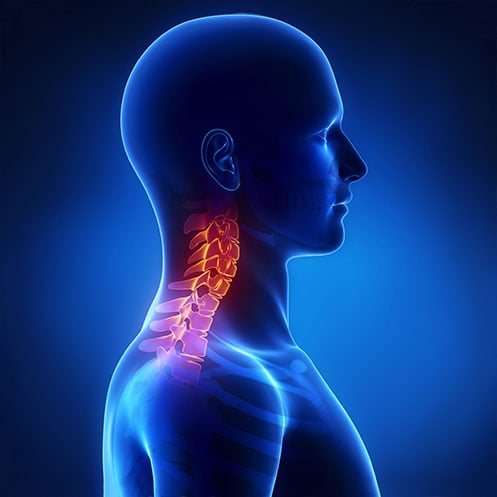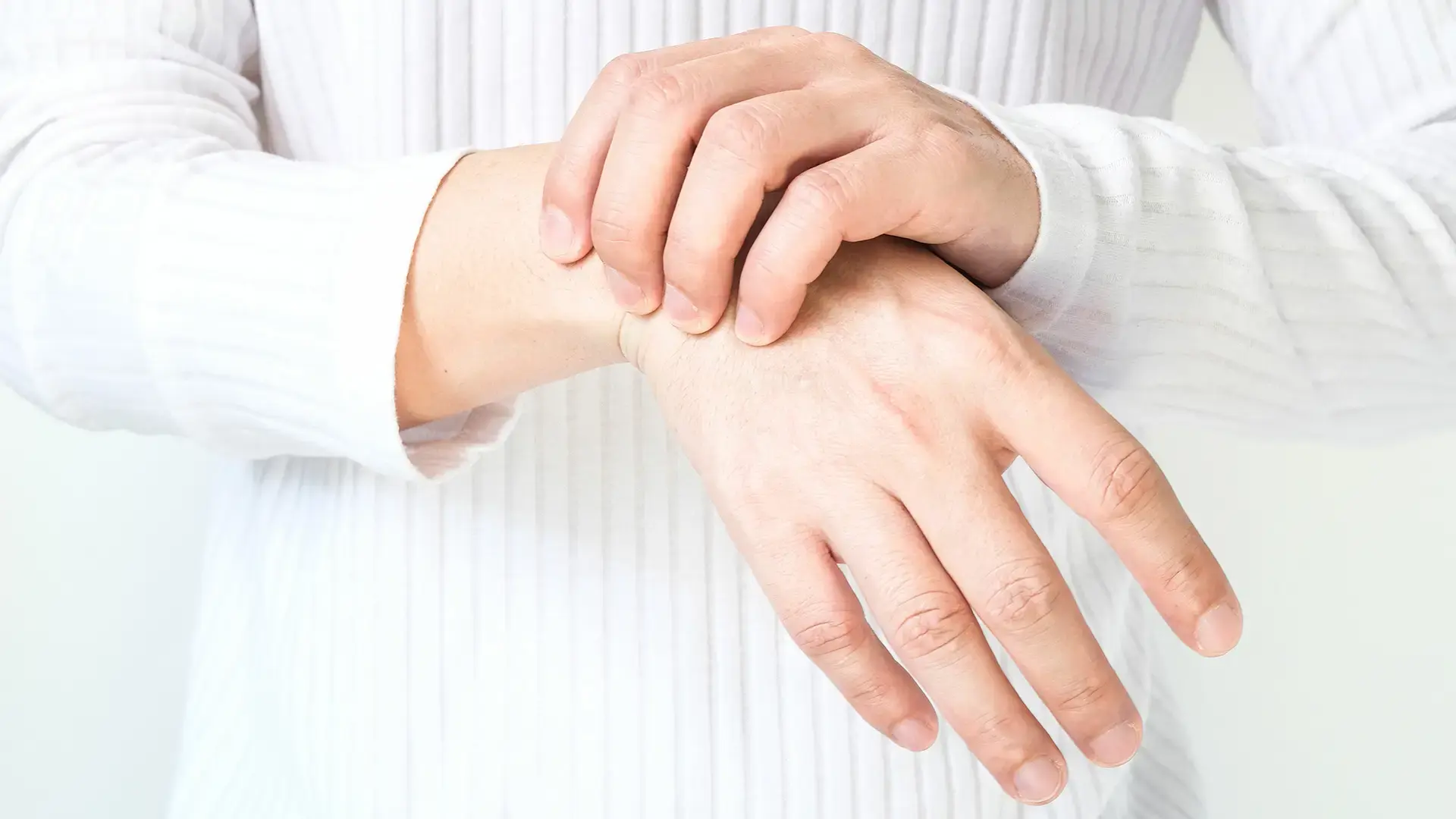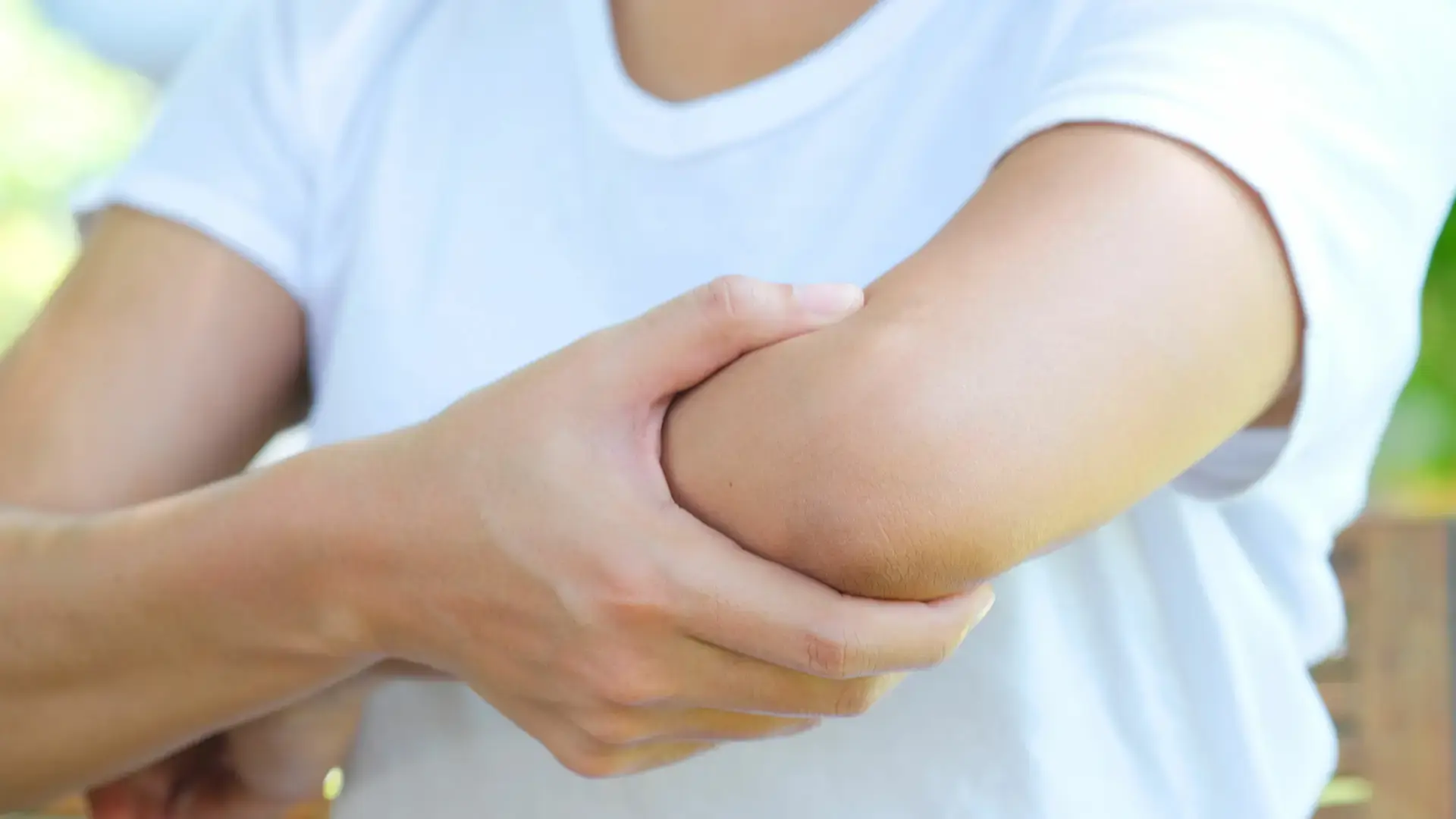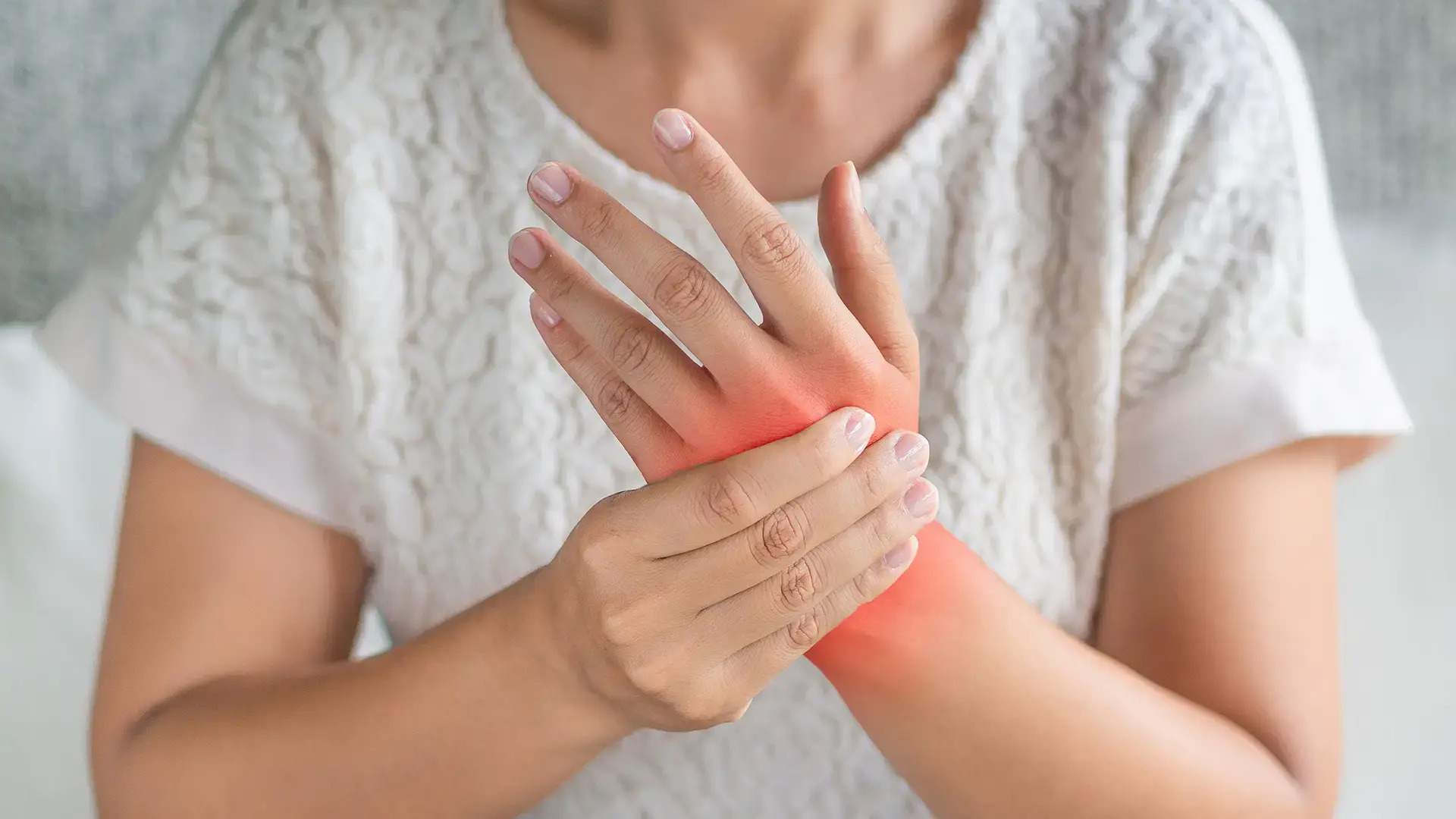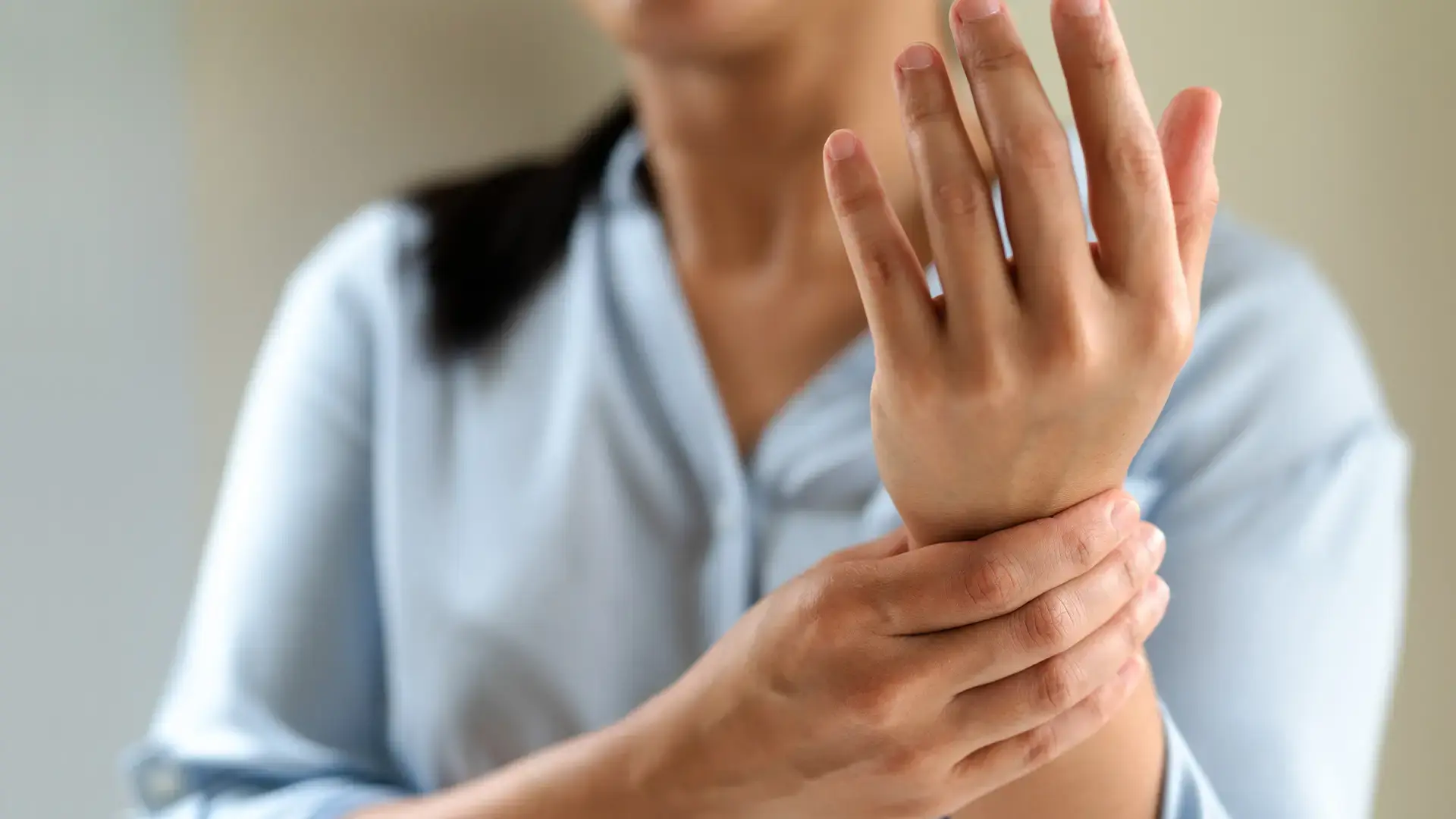Understanding Finger Arthritis: Focus on DIP and PIP Joints
Arthritis doesn’t just affect large joints like your hips or knees—it can also make everyday hand movements painful. If you’ve been waking up with stiff fingers or struggling to button a shirt, grip a coffee mug, or type without discomfort, arthritis in your finger joints may be the cause. The good news? Early care can slow progression and preserve your hand function.
What Causes Arthritis in the Finger Joints?
Finger arthritis can have many causes, especially since the DIP and PIP joints are more prone to wear and tear. Some common reasons for finger arthritis include:
- Genetics and age: A family history of arthritis and the natural aging process can raise your risk of developing arthritis.
- Osteoarthritis: As cartilage breaks down around your bones, it results in joint stiffness and discomfort, known as osteoarthritis.
- Post-traumatic arthritis: Having prior finger fractures, sprains, or joint injuries can raise your chance for arthritis later on.
- Psoriatic arthritis: This type of arthritis can bring about swelling, stiffness, and changes to your fingernails.
- Rheumatoid arthritis (RA): RA is an autoimmune condition that affects the finger joints by causing inflammation, pain, and even joint deformities.
“Many patients assume arthritis is just another part of getting older, but the truth is certain factors—like your family history or having a history of finger trauma—can affect your odds of developing arthritis in your hands and fingers. That is why sharing your medical history with your doctor is so important,” says Dr. Iyer.
Symptoms of DIP and PIP Joint Arthritis
Unique symptoms present when you have arthritis in the DIP and PIP joints.
For example, patients with finger arthritis often report:
- Difficulty bending or straightening your fingers fully
- Morning stiffness or joint pain after rest
- Swelling or tenderness near your knuckles
- Hard lumps or nodules forming near the joints (bone spurs)
- Loss of grip strength or fine motor control
Effective Treatment Strategies for Arthritis in the Finger Joints
While there is no cure for arthritis, there are treatment options to help relieve symptoms, restore hand function, and, most importantly, slow down your arthritis.
Non-Surgical Treatments
Patients can often see a difference with non-surgical treatment methods, including:
- Cortisone injections
- Hand therapy and exercises
- Over-the-counter anti-inflammatory medications (NSAIDs)
- Splinting or bracing
Surgical Treatments
If non-surgical options no longer provide relief—or if symptoms begin to interfere with daily activities like writing, dressing, or gripping objects—your doctor may recommend surgery. Surgical options are tailored to your lifestyle, activity level, and the specific joint affected. There are several procedures our surgeons can perform, such as:
- Joint denervation surgery: A minimally invasive procedure that reduces chronic joint pain by interrupting the nerves sending pain signals from the affected joint.
- Joint fusion (arthrodesis): Stops pain by fusing the DIP joint permanently with a plate and screws, offering long-term relief
- Joint replacement (arthroplasty): Reduces pain in the PIP joint by replacing the damaged joint with an artificial implant
- Tendon transfer: Replaces inflamed or damaged tendons with healthy tendon tissue
“We consider your age, activity level, and specific pain symptoms when recommending surgery,” says Dr. Iyer. “Our goal is to select the procedure that offers you the most lasting relief and preserves your hand function.”
Preventive Measures and Lifestyle Changes
There is no way to prevent arthritis completely, but lifestyle changes can make a difference. Minor modifications to your daily routine can reduce joint strain and prevent your arthritis from worsening. Here are some simple steps you can start with:
- Do hand exercises daily to maintain flexibility and prevent joint stiffness.
- Practice joint protection, such as lifting with your palm instead of your fingers.
- Maintain a healthy weight to reduce overall inflammation.
- Use ergonomic tools, like padded grips, to ease joint stress during daily tasks.
Care for Arthritis in the DIP and PIP Joints That Lasts
“If finger pain, swelling, or stiffness is starting to interfere with your daily life, don’t wait for symptoms to worsen. Early diagnosis and personalized care can prevent long-term damage and help you stay active. At The Center for Hand and Upper Extremity Surgery, we offer advanced diagnostics and both surgical and non-surgical treatments tailored to your needs.” encourages Dr. Iyer.
At The Center for Hand and Upper Extremity Surgery, patients can find the latest diagnostic tools and advanced treatment solutions, including non-surgical and surgical options. Our most important goal is to preserve your finger function and quality of life so you can return to the things you love.
At The Center for Hand & Upper Extremity Surgery, we treat chronic pain in hands, hand, wrist, arm, and shoulder arthritis, nerve injuries, and other common causes of chronic hand pain.
If you are ready to explore surgical options for finger arthritis, contact Dr. Iyer and the care team at The Center for Hand & Upper Extremity Surgery, part of The Institute for Advanced Reconstruction, for a consultation today.
